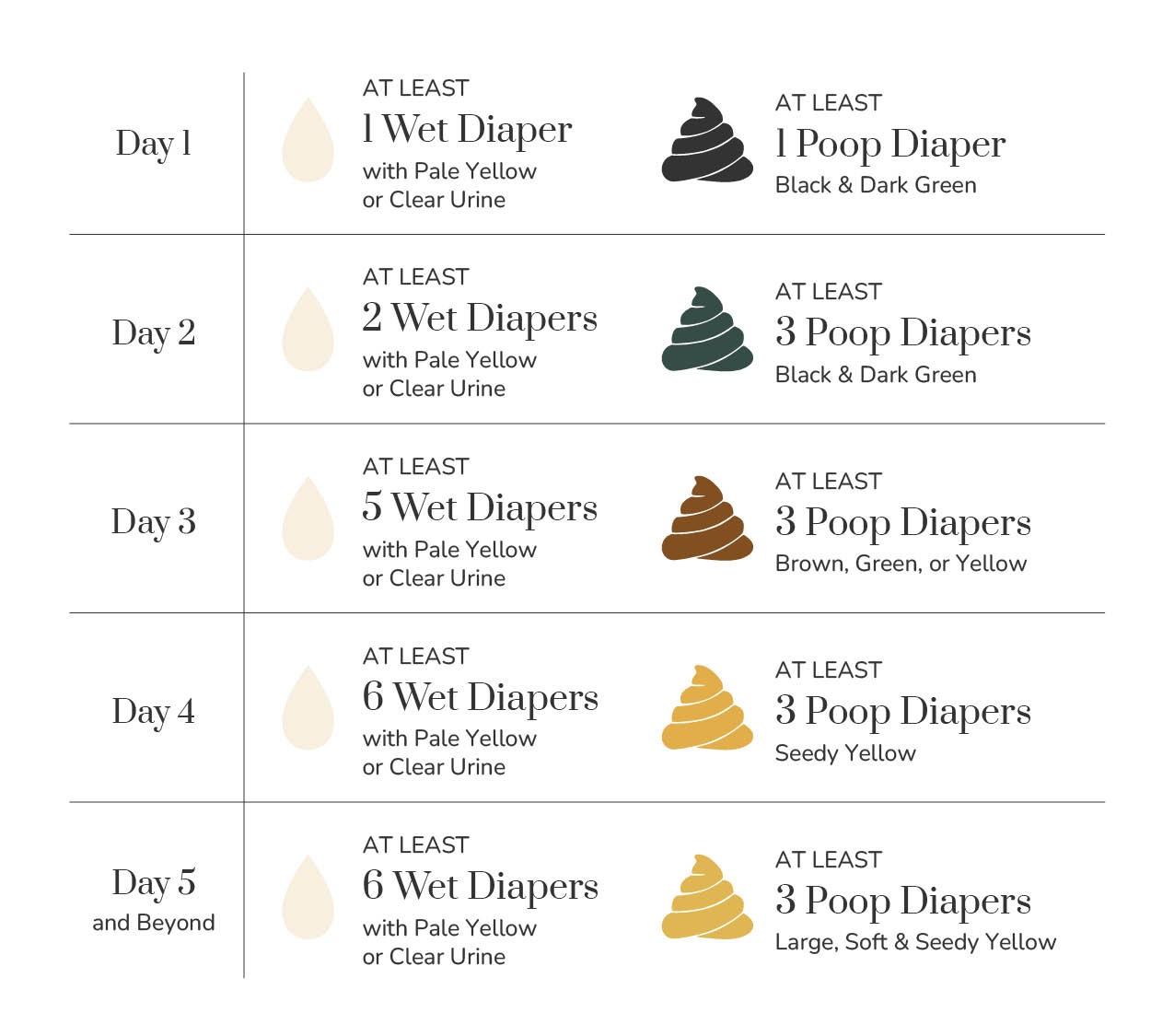Becoming a new mom is an exciting time, filled with new experiences and so much to learn! The first three weeks of breastfeeding can feel like a steep learning curve for both you and your baby. But don’t worry—this guide is here to help you navigate these early days with confidence. You’ll find tips on what to expect and how to make this time as smooth and comfortable as possible. Take it one day at a time, and soon you’ll feel like an expert on your baby!
- Most newborns need to nurse at least 8-12 times a day.
- Most feedings will be 1.5-3 hours apart, from the beginning of one feeding to the beginning of the next.
- If your baby is breastfeeding well and has plenty of wet and dirty diapers, it's okay to let them go a bit longer between feedings, up to 4-5 hours, once a day. Take this opportunity to nap yourself!
- A deep latch is key to comfortable and effective breastfeeding. Make sure your baby’s mouth covers a good portion of the areola (the darker area around the nipple) and not just the nipple.
- Try alternating breastfeeding positions to find what works best for both you and your baby.
- If the latch is painful, break the suction with your finger and try again until it is comfortable. Often, the second or third try is better!
- Offering both breasts at each feeding is a great way to make sure your baby is getting enough milk and also helps stimulate your milk supply.
- If your baby is sleepy and doesn’t seem interested in the second side, try changing their diaper or giving them a quick burp in between to help wake them up.
- Your milk supply will grow from 1-2 teaspoons per feeding on your baby's birthday to 1-2 ounces per feeding by the end of their first week!
- Your breasts will be fuller before feedings and softer after your baby nurses. This is a good sign that your baby is transferring milk well.
- Here’s how to ease the discomfort of engorgement:
- Apply cold packs to your breasts in between feedings to reduce inflammation.
- Ibuprofen, if prescribed, can also help reduce swelling and pain.
- If your baby is struggling to latch effectively, initiate hand expression or pumping after feeding attempts to make sure your baby is getting enough milk. This will also help to ensure your milk supply is well stimulated.
- Contact your Lactation Consultant as soon as possible. They can provide invaluable support in helping you overcome any breastfeeding difficulties you may be having.
Take Care of Yourself3
- As you care for your baby, don’t forget to care for yourself:
- Eat nourishing foods to keep your energy up for breastfeeding.
- Drink plenty of water to stay hydrated.
- Rest whenever you can, even if it’s just for a few minutes.
References
- https://aeroflowbreastpumps.com/media/amasty/amfile/attach/ngsO6kyTixPxqaY5bI2yBtOgmi3a6JzI.pdf?srsltid=AfmBOoomFzOqyMqcdAPIm8jRAfabCEwsDrAeQyinRamreS5Ja4Fz1TGe
- https://www.bfmed.org/assets/7%20ABM%20Model%20Maternity%20Policy%20Supportive%20of%20Breastfeeding%20English.pdf
- https://firstdroplets.com/





More Pregnancy Care Guides
How to Use a Breast Pump
Food Sensitivities in the Breastfeeding Dyad
Health Benefits of Breastfeeding for Mothers
Dysphoric Milk Ejection Reflex (D-MER)
Self-Management for Breastfeeding with Perinatal Mood Disorders